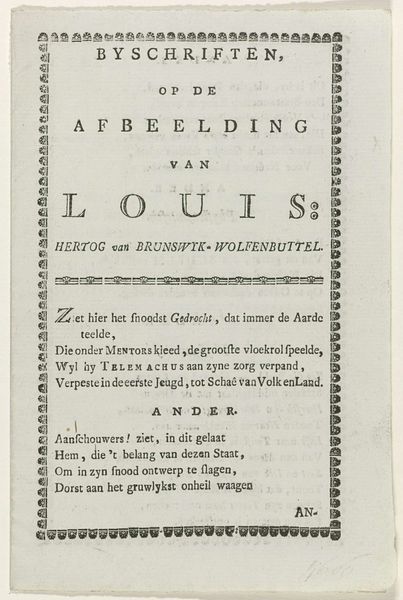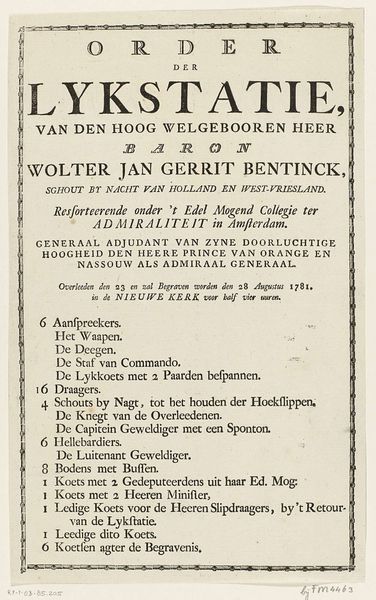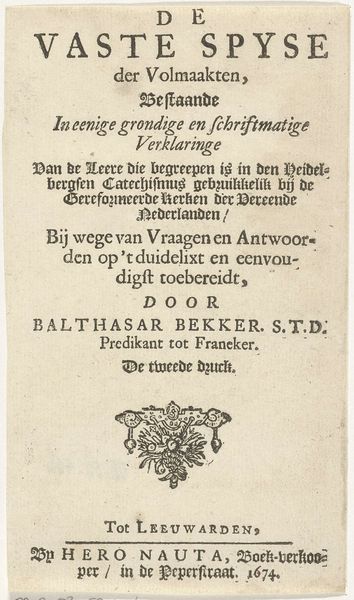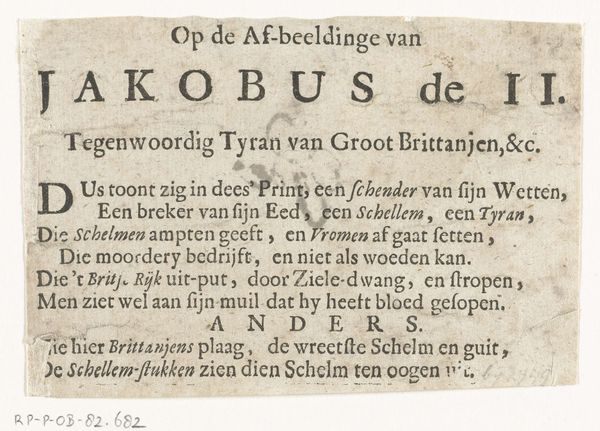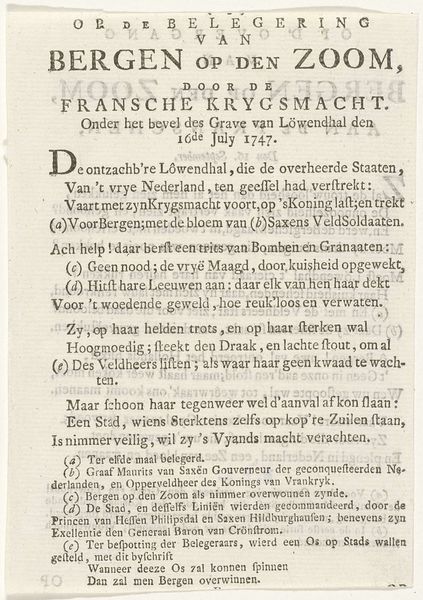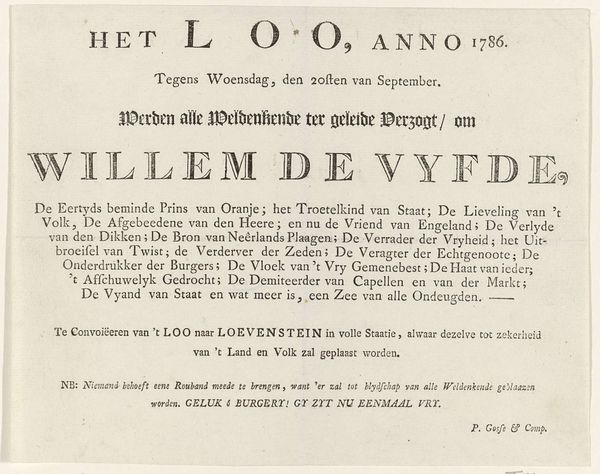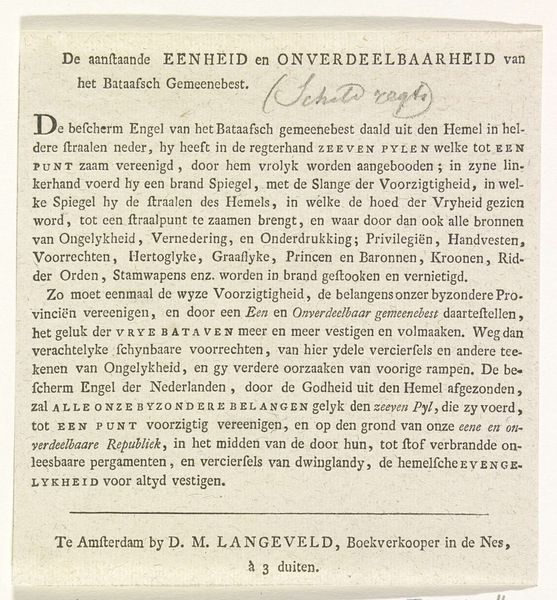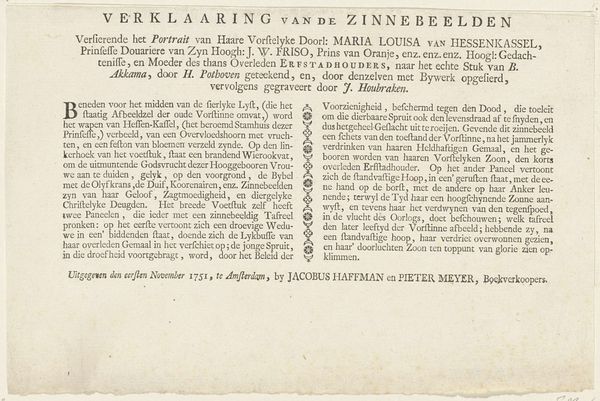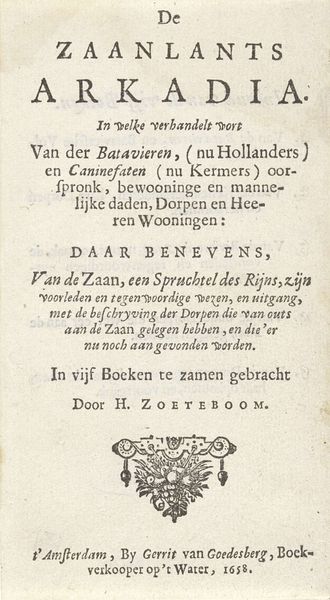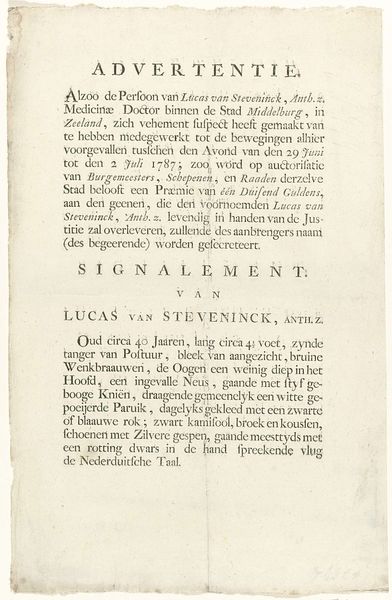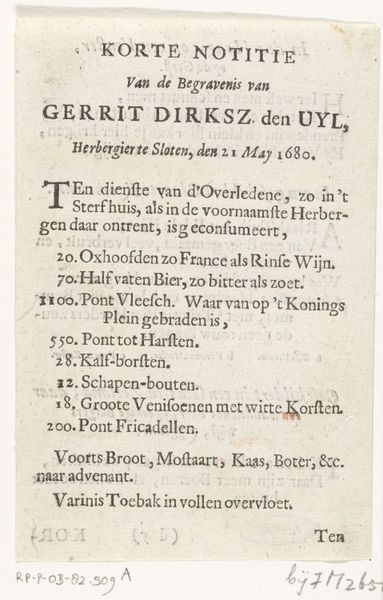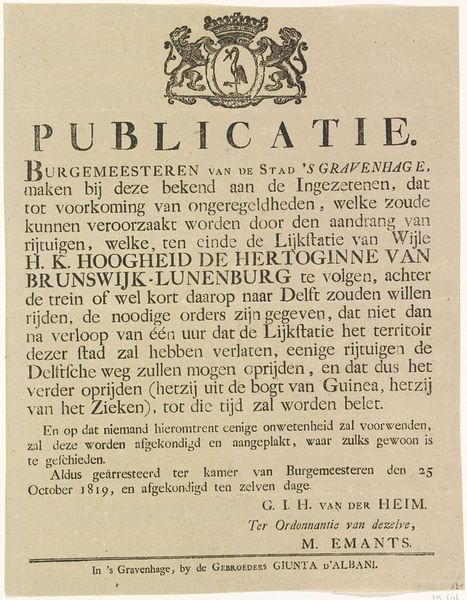
Dimensions: height 179 mm, width 231 mm
Copyright: Rijks Museum: Open Domain
Curator: Looking at this engraving, "Uitnodiging voor de begrafenis van de hertog van Brunswijk, 1784," made by an anonymous artist, I am immediately struck by the bold typography. The layout certainly guides the eye, a sophisticated hierarchy at play. Editor: I’m finding the overall impact surprisingly visceral. The crude nature of the printed announcement, that coarse paper, almost makes the death feel very present, like a body laid out. There’s an immediacy despite the remove of historical distance. Curator: Note the contrast in letterforms; the elegance of the initial cap in "Worden" against the blocky, almost brutal announcement of the Duke's name. There's a clear articulation of levels of importance, which shapes how we receive the invitation’s message. The hand-drawn qualities fight against perfect symmetry. Editor: Agreed. And consider the social function here: it's not merely disseminating information about a death, but crafting a narrative. It reads like propaganda against the Duke; "Pest van Nederland" is quite a choice of words. One wonders who commissioned and circulated this document and what sort of audience were they trying to reach? Curator: The almost chaotic piling up of epithets, it pushes legibility towards pure form. "Kuiper om den Hoed," what a wonderfully textured phrase! The semantic content is less relevant than its physical presence as a unit in the composition. This is about visual impact above all else. Editor: And the line at the very bottom “NB. Ieder werd verzogt om Kruismunt mede te brengen, om dat Hy zo stinkt”—"bring mint, because he stinks!" The practical realities of a body decomposing undoubtedly influenced every material choice, from the speed and cheapness of the print, to that raw unvarnished message at the end, undercutting any notion of formality or reverence. This piece reminds us death touches everyone irrespective of title. Curator: I find the piece demonstrates how much semiotic information can be held in typographic style. Editor: It highlights how the act of memorializing someone could, in the right hands and materials, become a calculated act of class conflict, and that such moments were captured even on ephemeral mediums such as invitations.
Comments
No comments
Be the first to comment and join the conversation on the ultimate creative platform.
